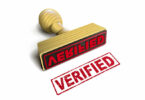Last week the China Banking Association unveiled a new blockchain solution to verify bank audit letters, developed alongside the Chinese Institute of Certified Public Accountants. More than a hundred banks and audit firms have applied to join the network.
Typically during a company audit, the auditors ask for a letter from banks to prove that a bank balance exists. One of the challenges is that paper letters from the bank can be forged.
On the face of it, this sounds like a boring back-office solution. However, the impact can be far-reaching and is a very strong use of a blockchain. For example, one of the key issues at the heart of the Wirecard collapse was allegedly the lack of bank letters supporting large bank balances, which usually would result in an audit failure.
If these sorts of comfort letters have a hash or fingerprint stored on a blockchain with a bank’s electronic signature, it will be possible to prove that a bank letter was issued by the bank and not edited in a graphics program.
The new solution deals with the entire process from applying for the bank letters, its authorization, and providing the letter. Another risk is also addressed – that an unauthorized person might ask for the letter, rather than the auditor. Hence, the banks also need to know that the request for the letter is authorized.
For security reasons, the platform does not store the letter itself, but logs the process of providing the letter. The world’s largest bank, the Industrial and Commercial Bank of China, is also involved in the solution by providing its ICBC Seal Chain.
It’s by no means the CBA’s first blockchain endeavor. Two years ago, it launched a trade finance solution for domestic Letters of Credit and forfaiting.






